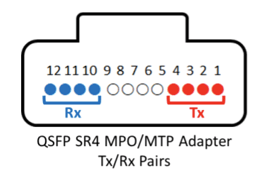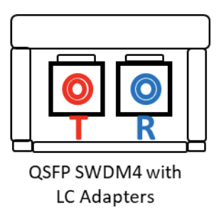OM3 and OM4 duplex multi-mode fiber is ubiquitous in data center and enterprise networks as the building blocks to support 10G Ethernet. Dual LC patch cables are easy for technicians to clean and install, making them the preferred connectivity option for many networks.
Networks migrating to 40G and 100G initially found that their upgrade costs went far beyond just the switch and transceivers. Short reach (SR4) 40G and 100G QSFP transceivers use parallel optics that accept MPO/MTP connectors. QSFP parallel optics transmit and receive over four fiber pairs. Each pair transmits and receives one 10G or 25G signal that is processed by the transceiver into a 40G or 100G Ethernet connection.

Many networks felt the financial sting of not only upgrading their switch environment, but also their structured cabling. Introducing MPO/MTP connections may also require new patch cables, patch panels and even an increase in the number of network fibers.
The SWDM4 standard was developed to meet the market need to use existing multi-mode fiber cable infrastructure. SWDM4 transceivers deliver 40G and 100G connections in the same way a standard SFP+ transceiver connects, using duplex LC OM3 or OM4 cabling. SWDM4 differs from the 40G QSFP+ bi-directional ("BiDi") deployed by a dominant OEM in that it is standards-based. Any SWDM4 from any manufacturer will be interoperable with one another. The 40G QSFP+ "BiDi" is a proprietary protocol that is not interoperable with other manufacturers or suppliers.

SWDM4 transceivers are a smart choice for data center and enterprise networks faced with potential cable upgrades. Contact us to learn more about how ProLabs SWDM4 QSFP28 transceivers can eliminate the need for costly cable upgrades.
Contributed to by Raymond Hagen, ProLabs Americas Product Manager


.png?width=58&height=58&name=X_logo_2023_(white).png)
